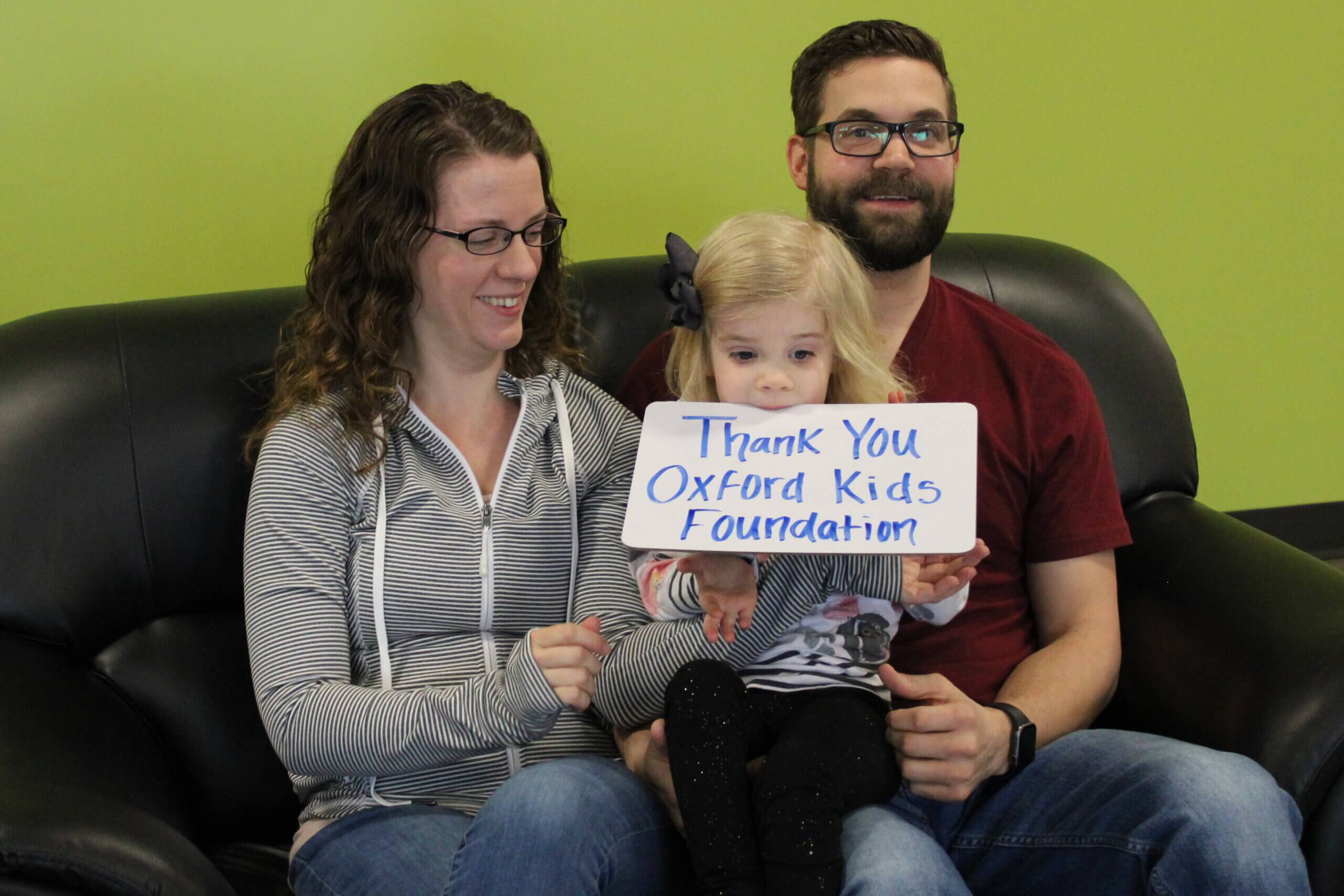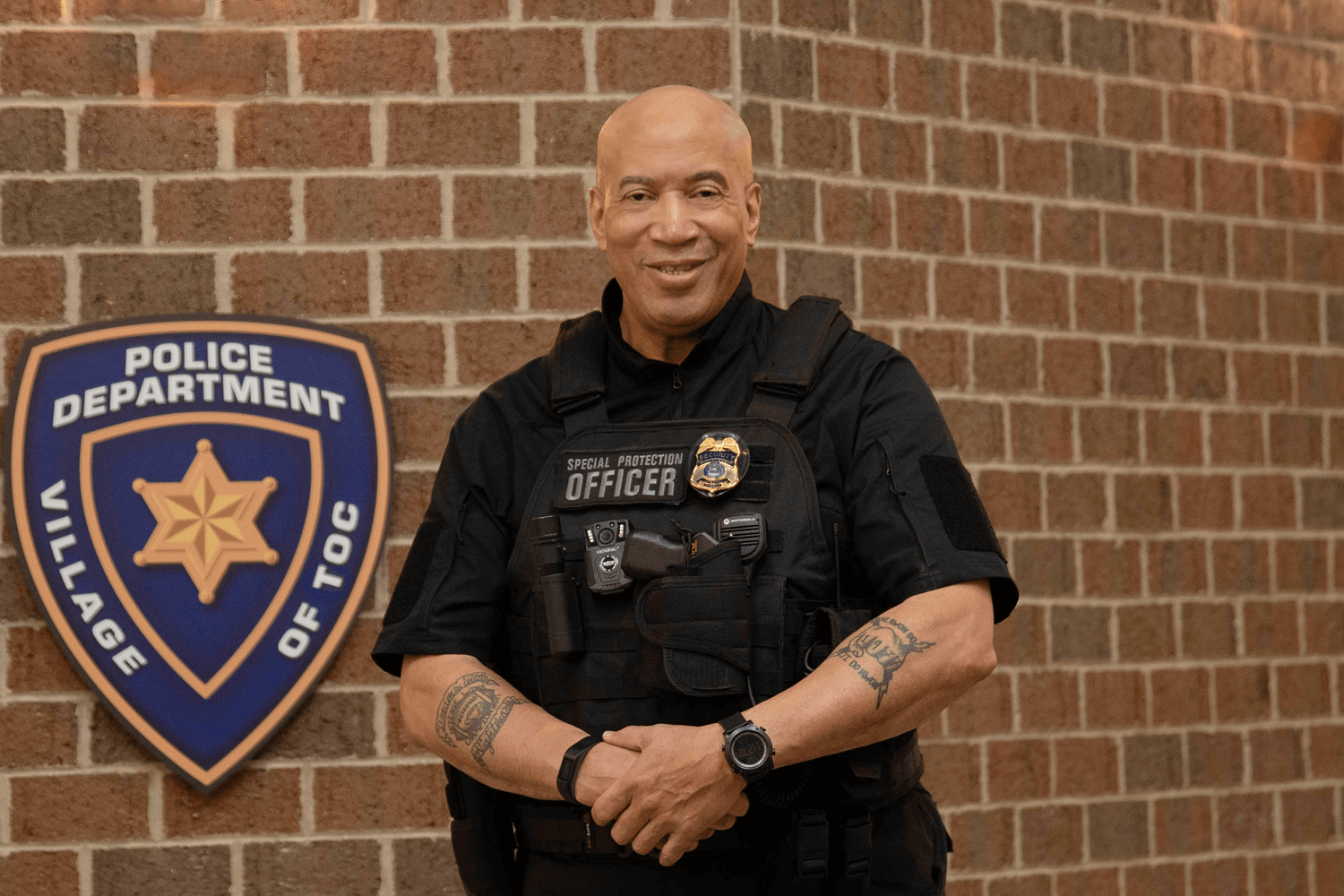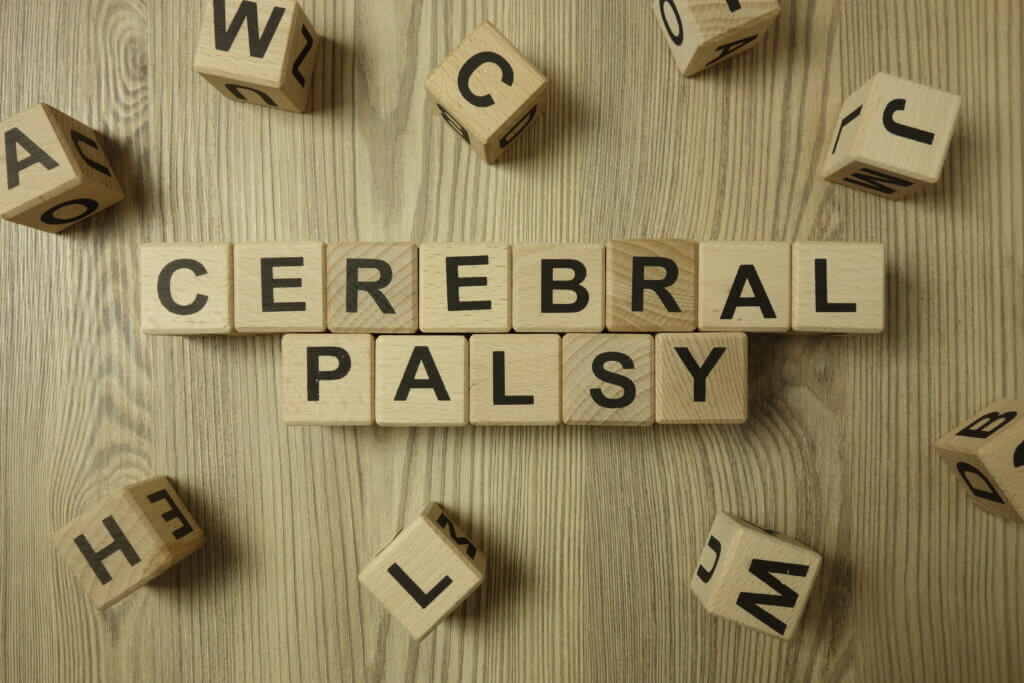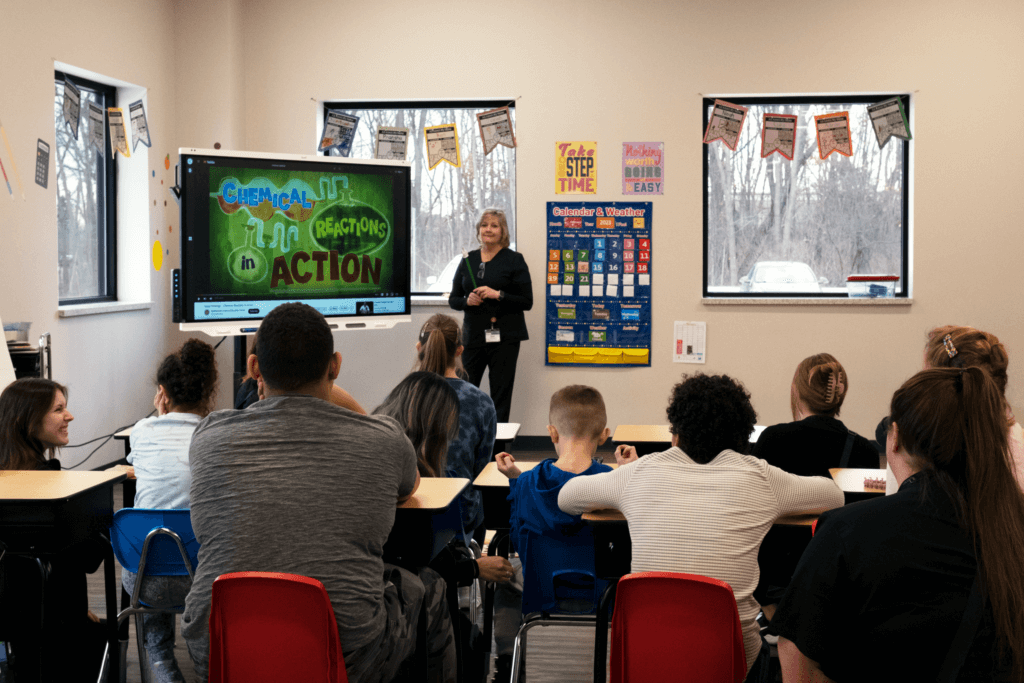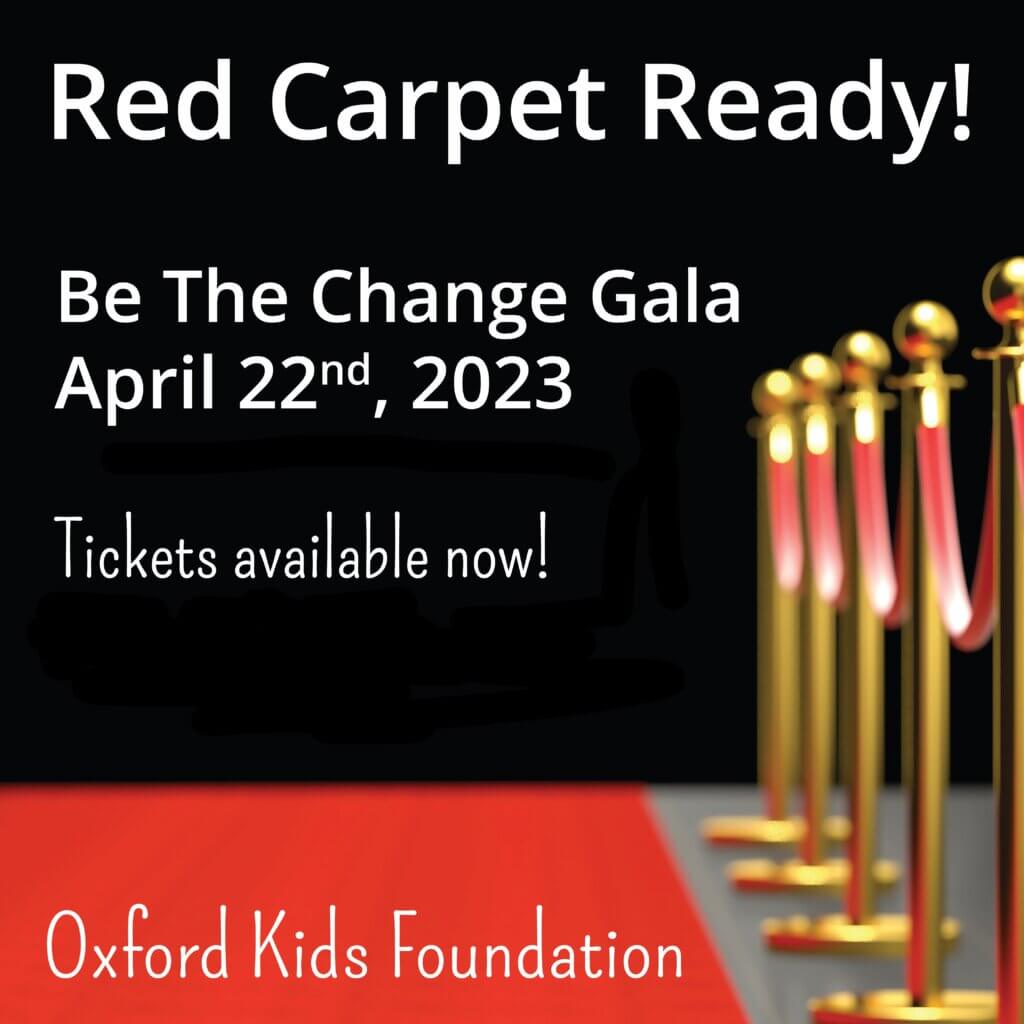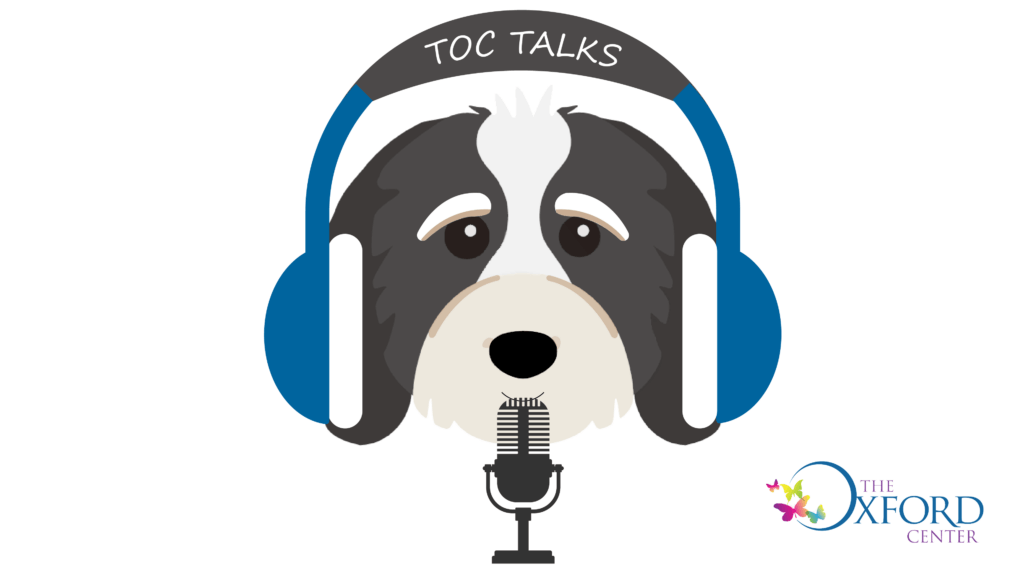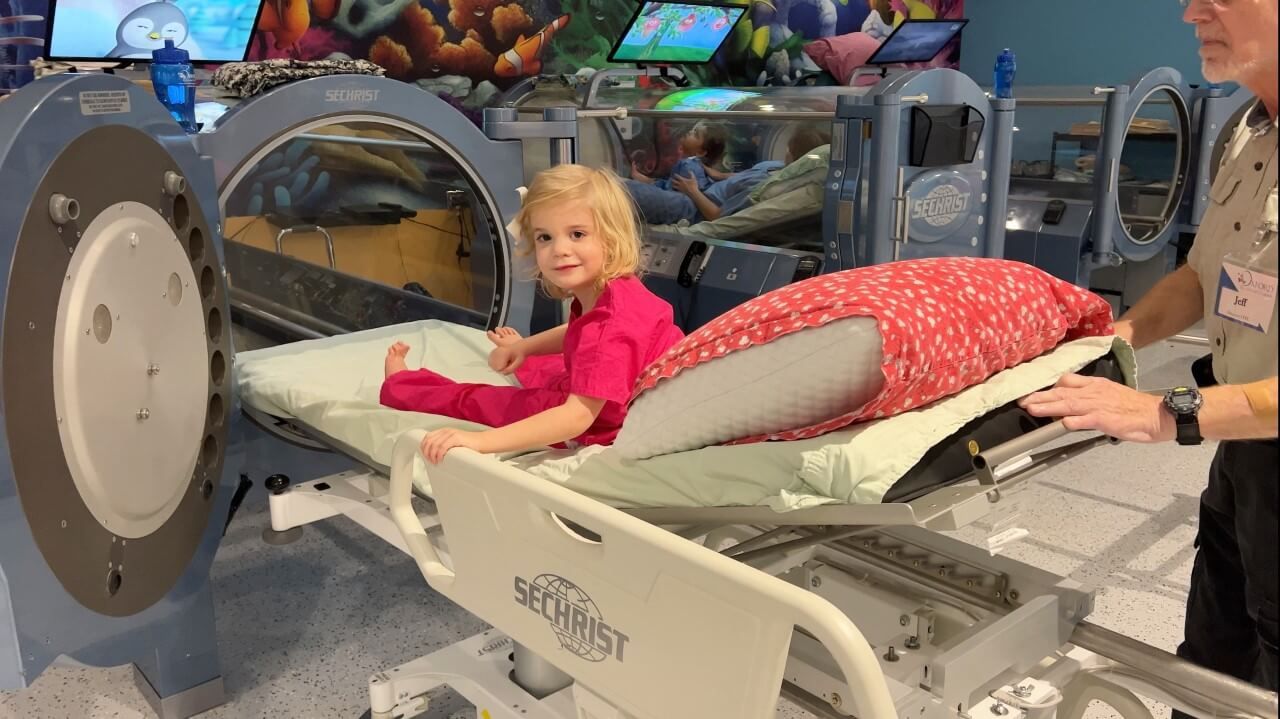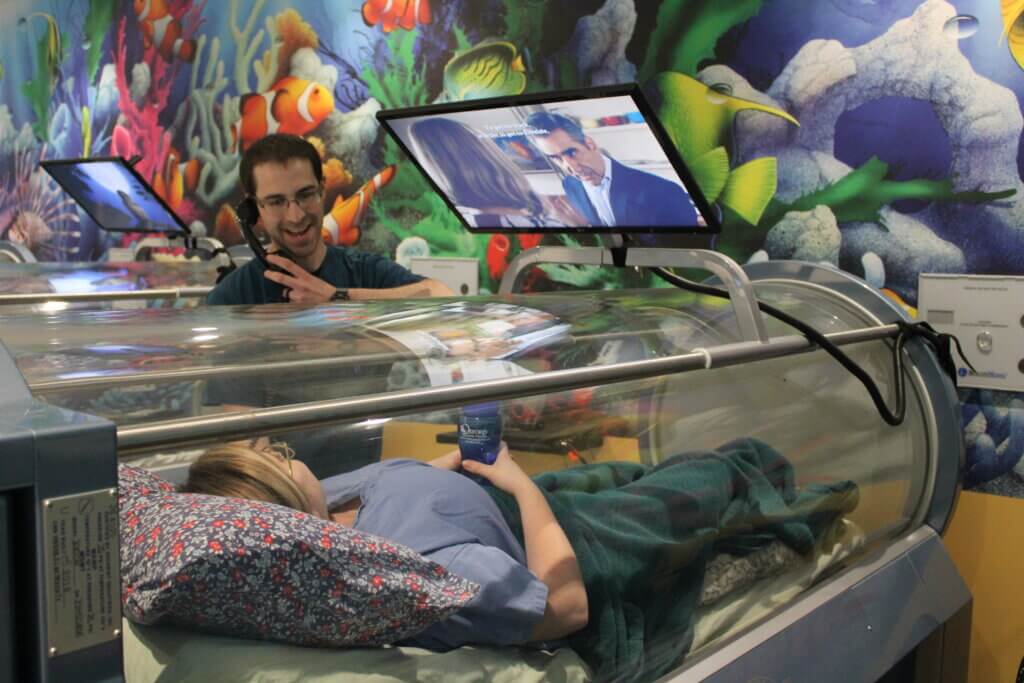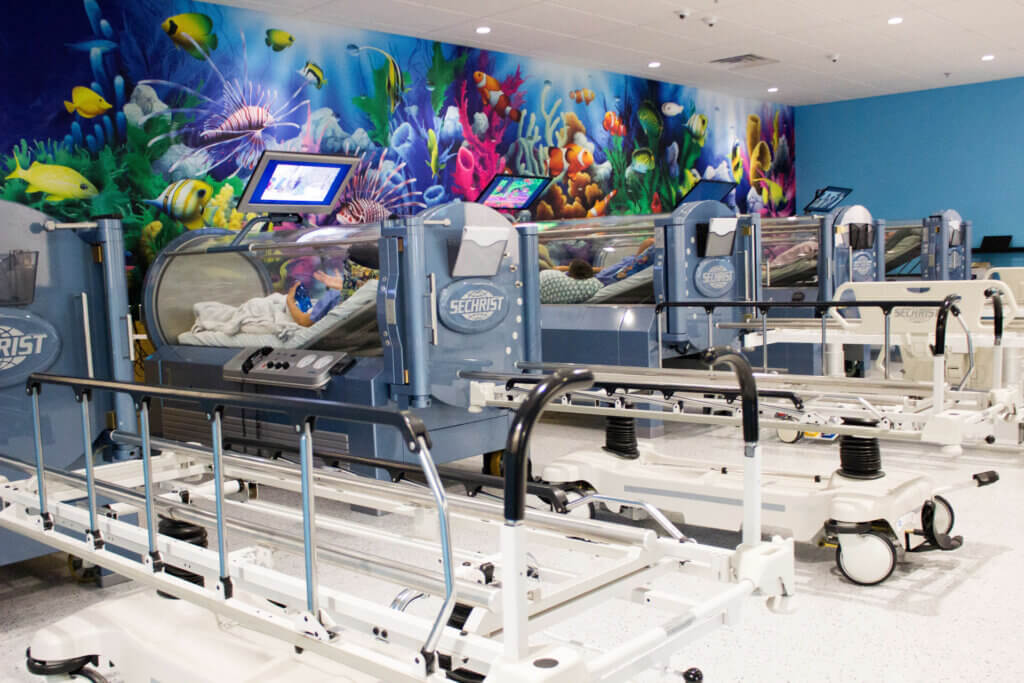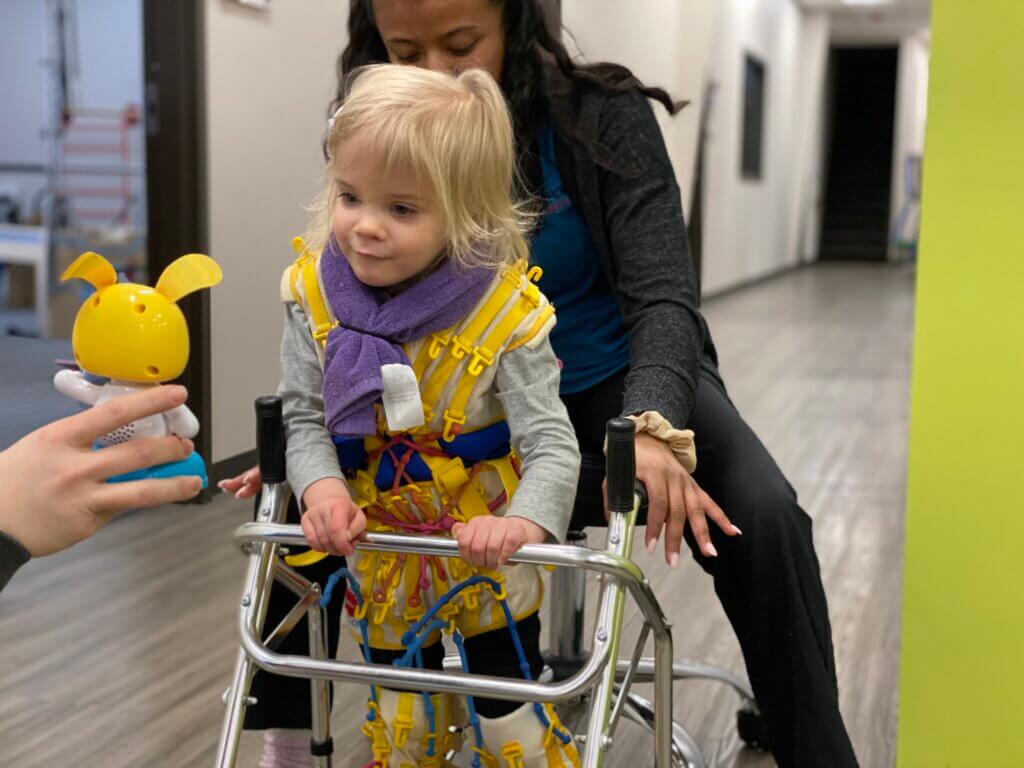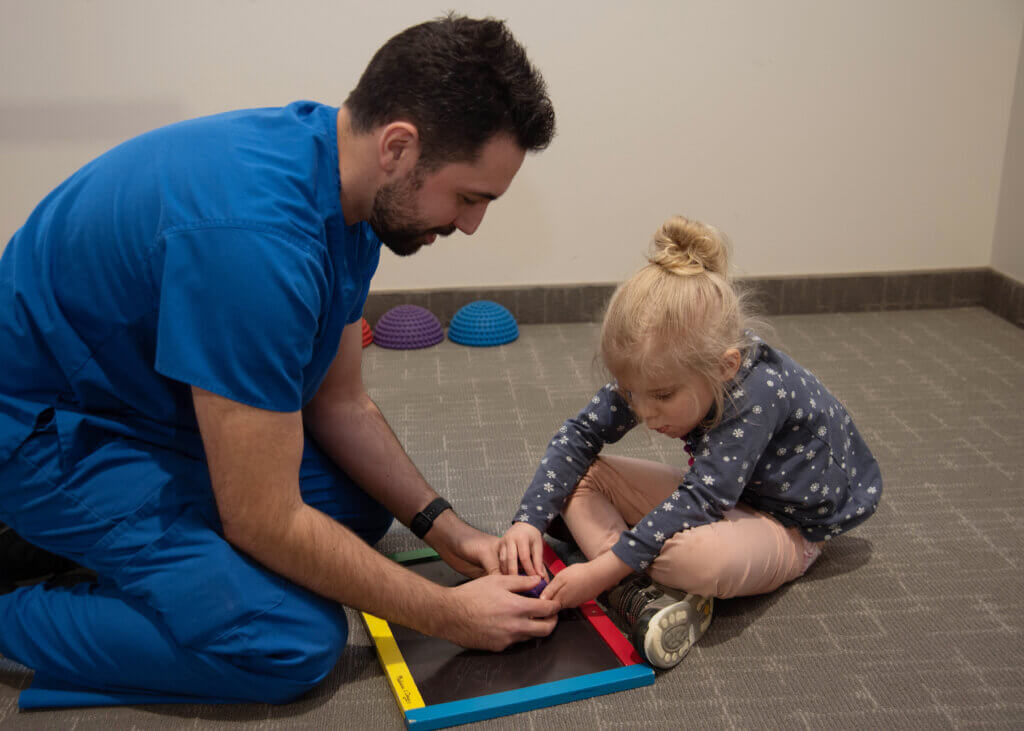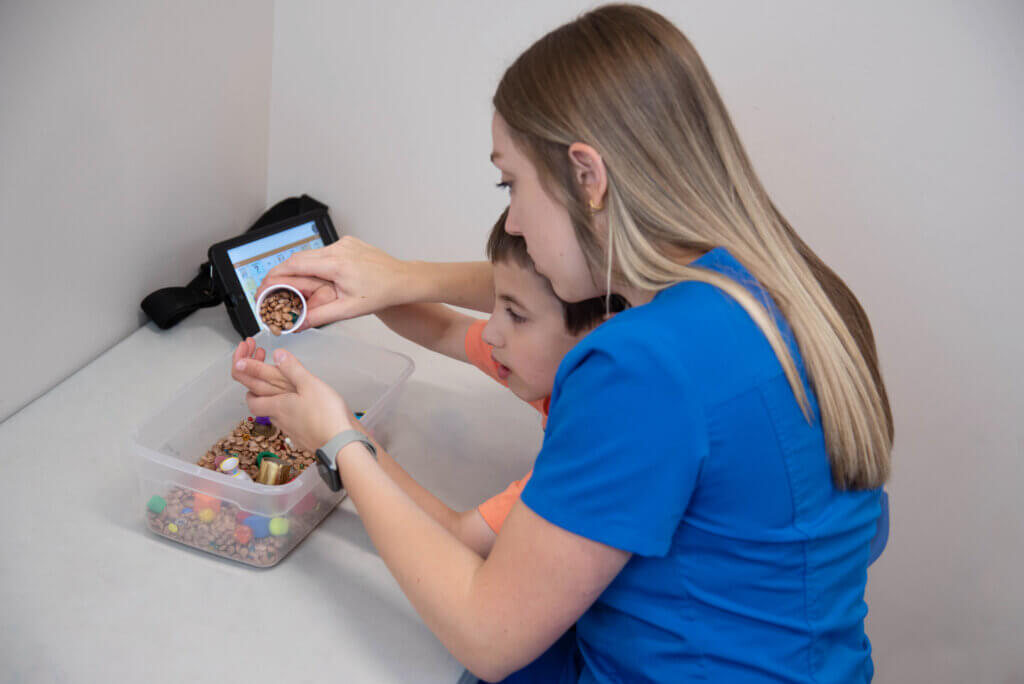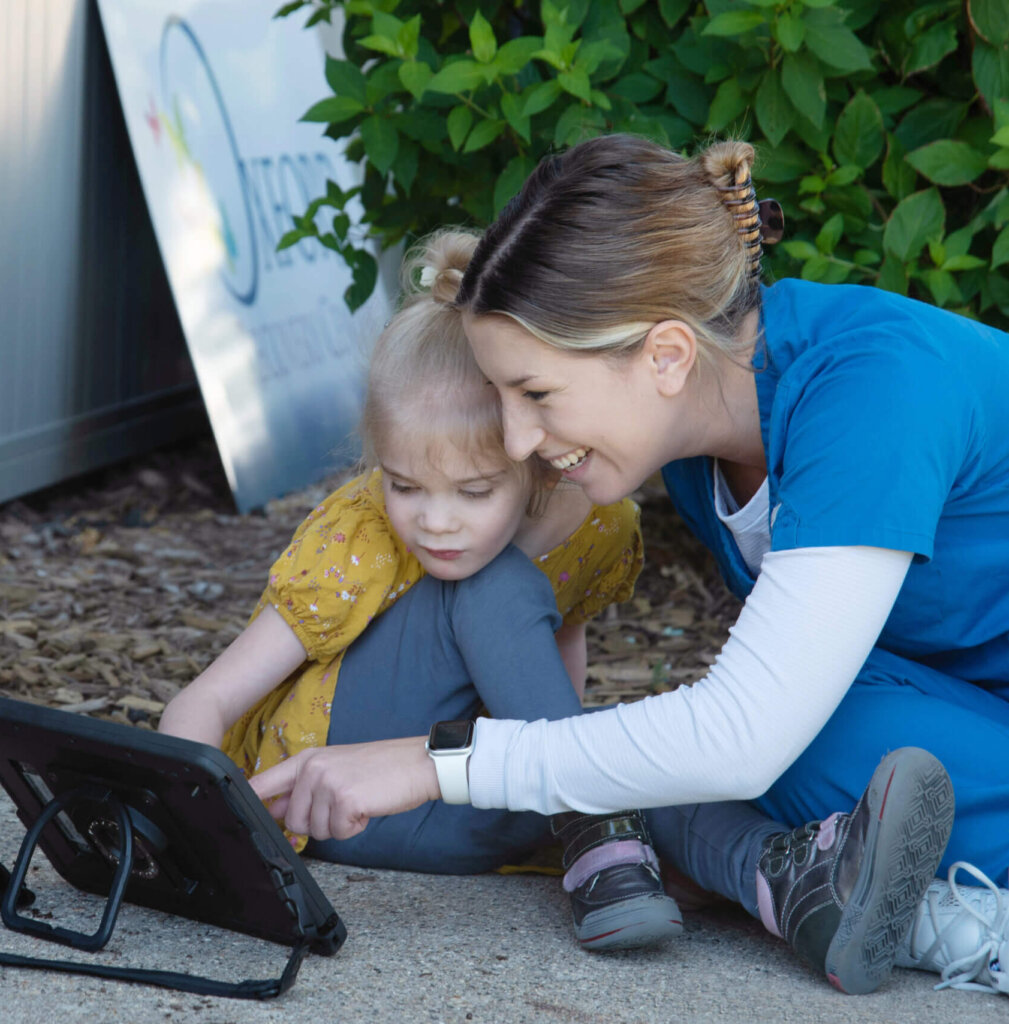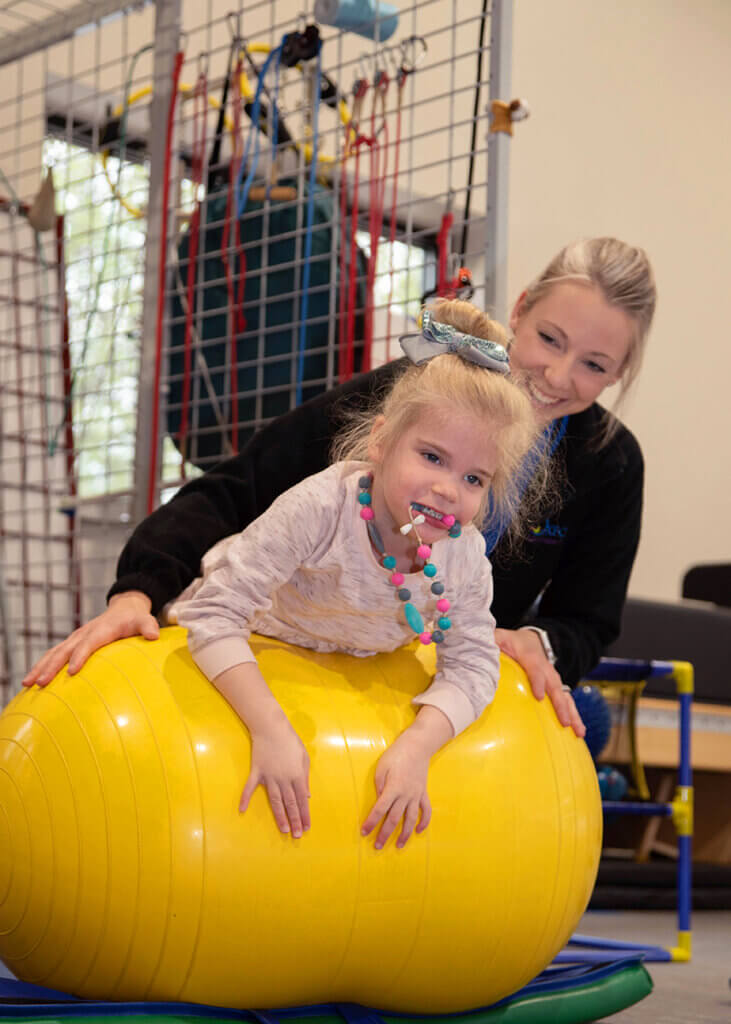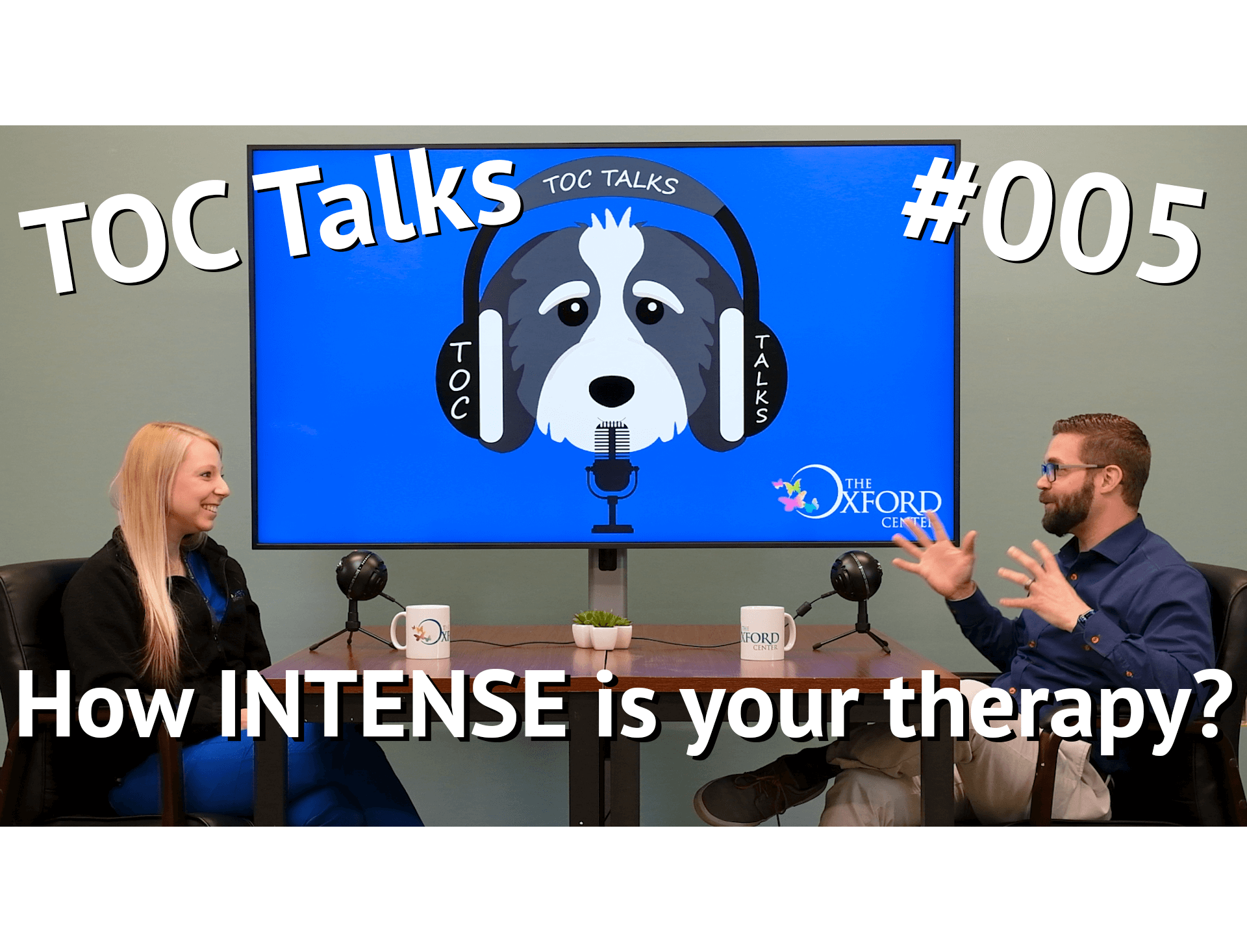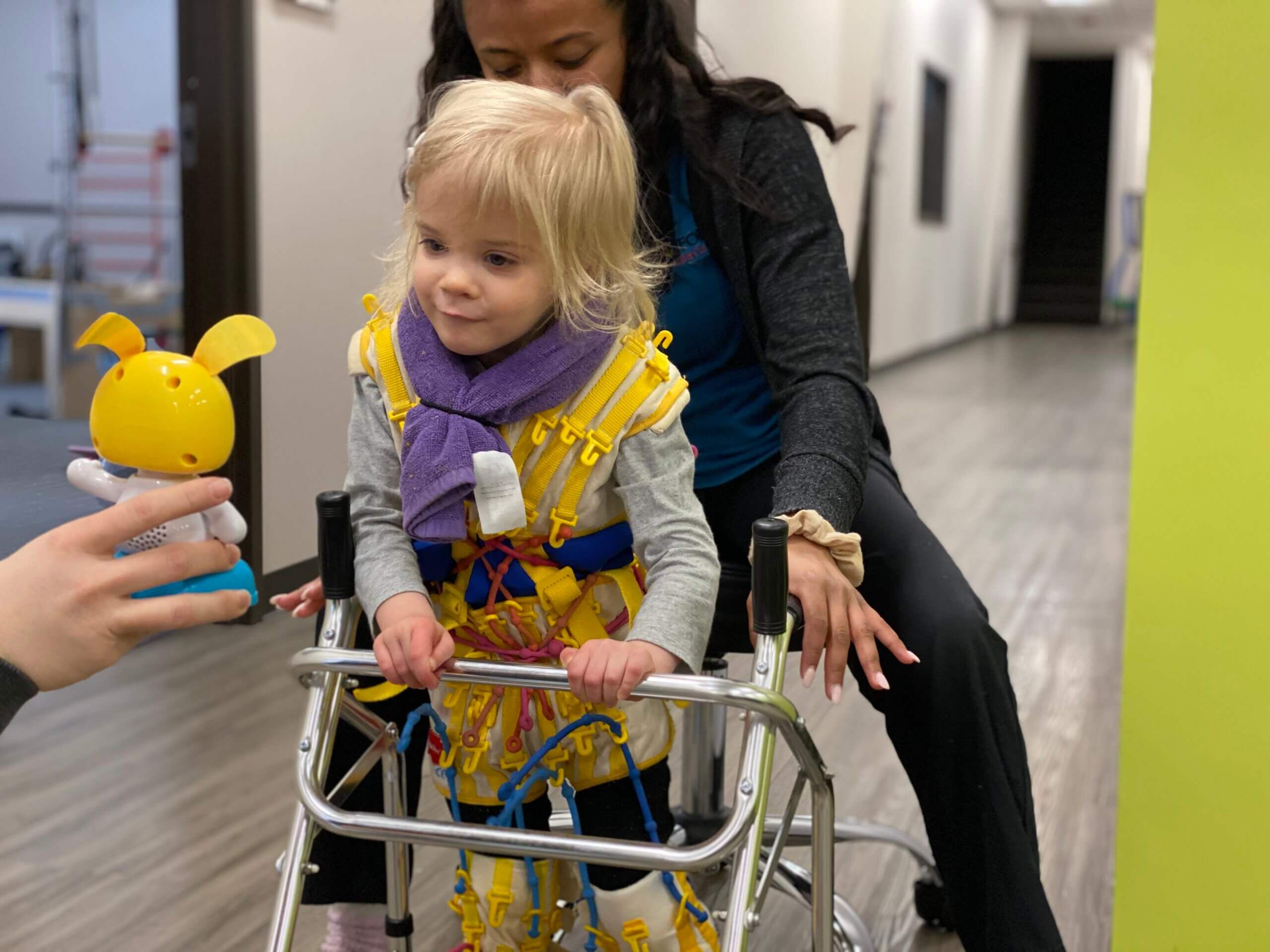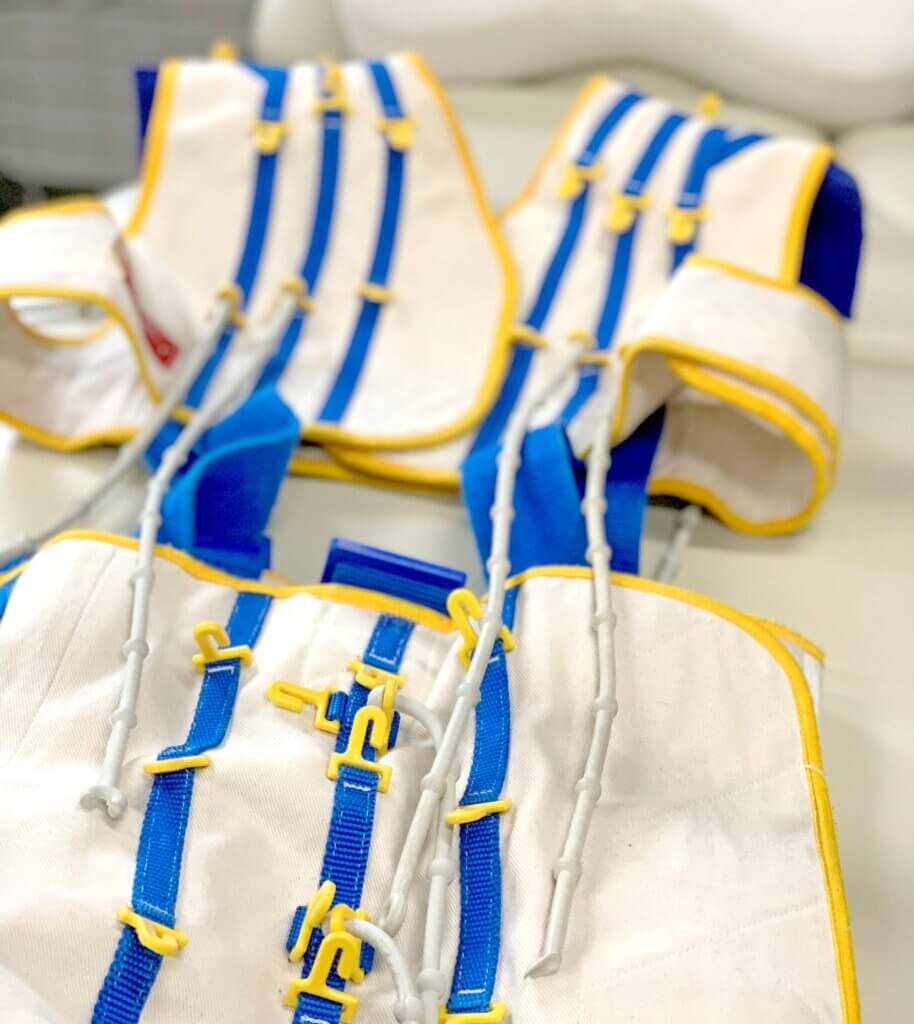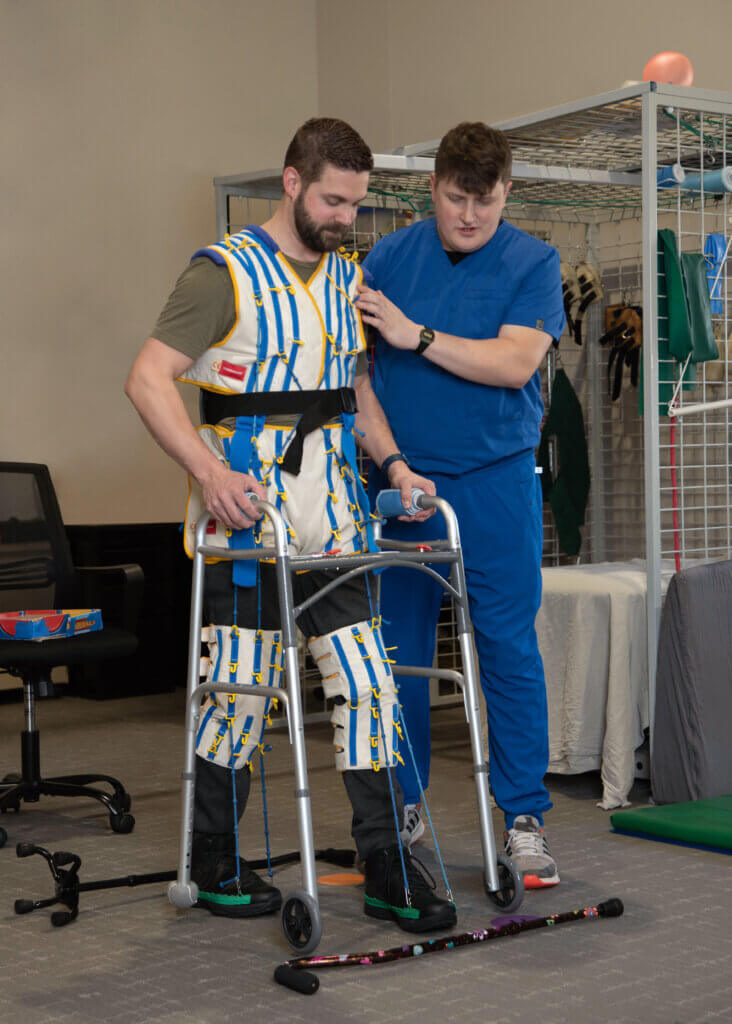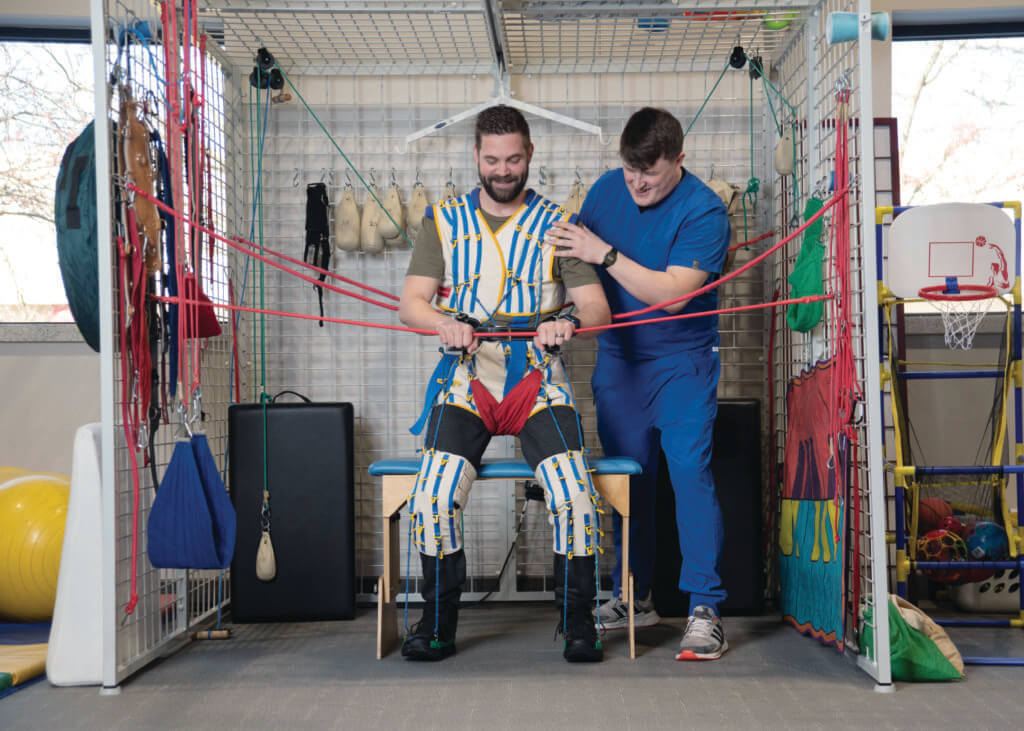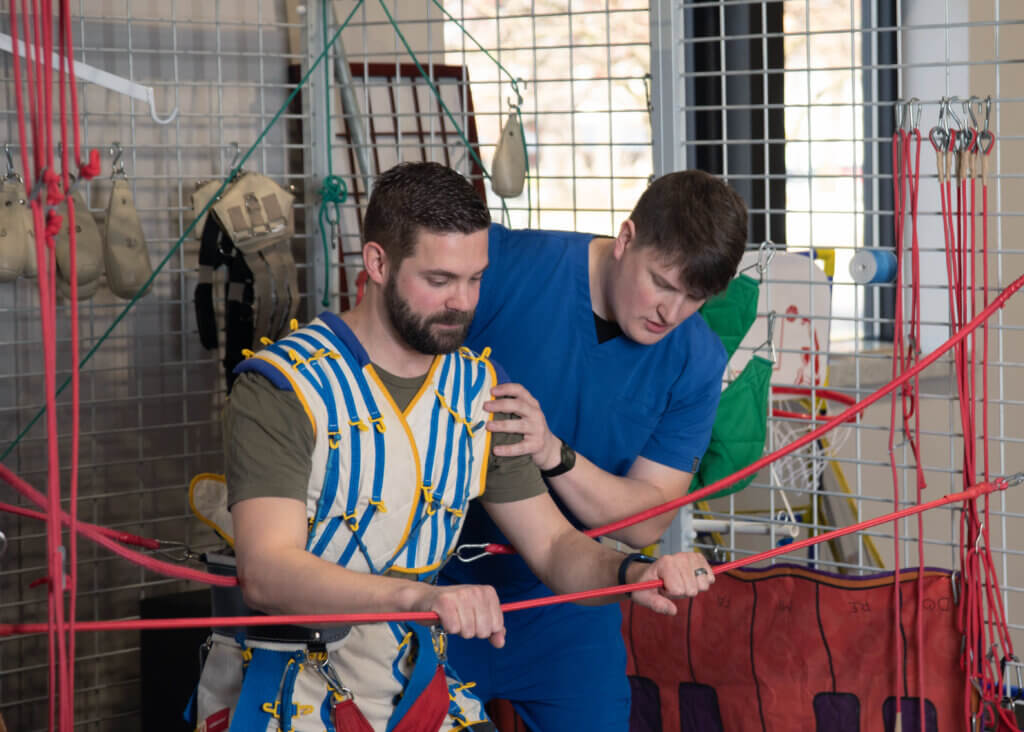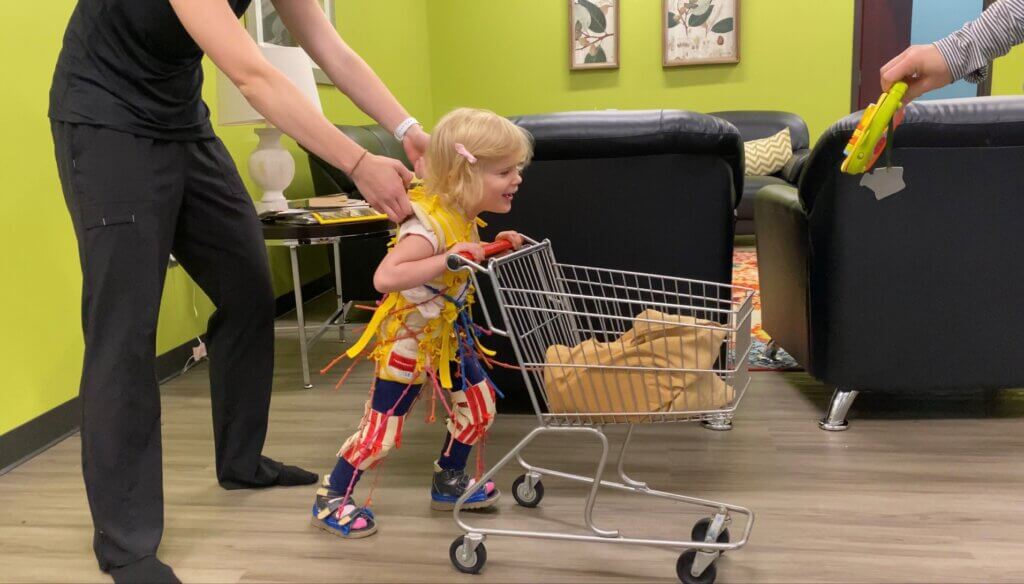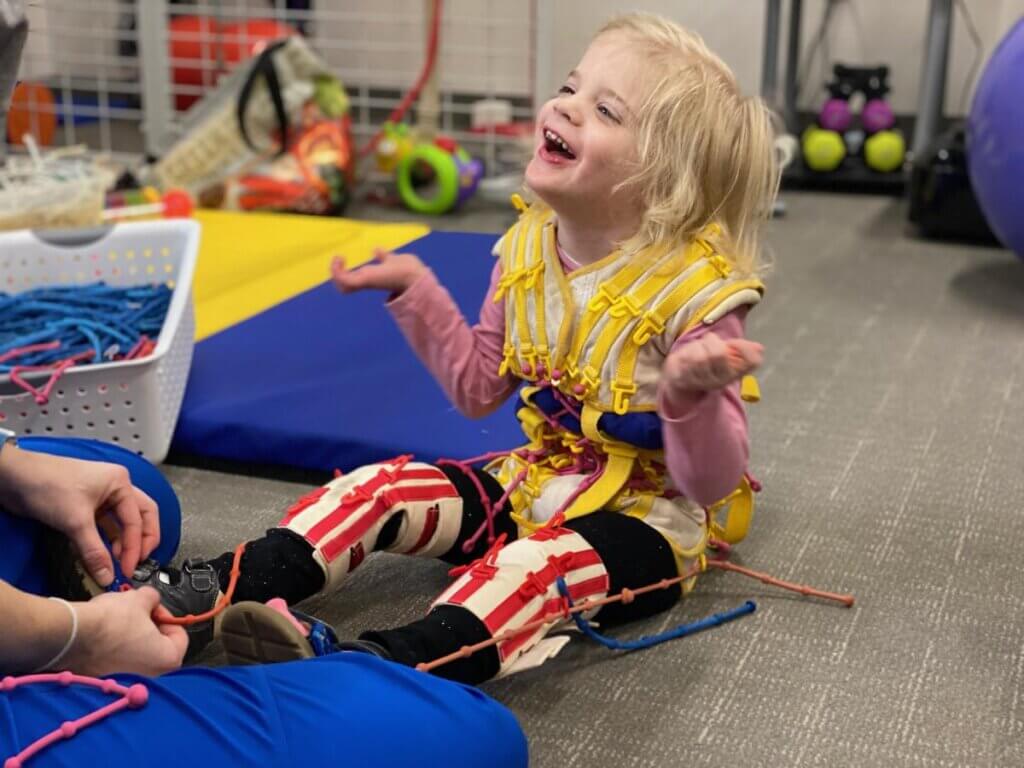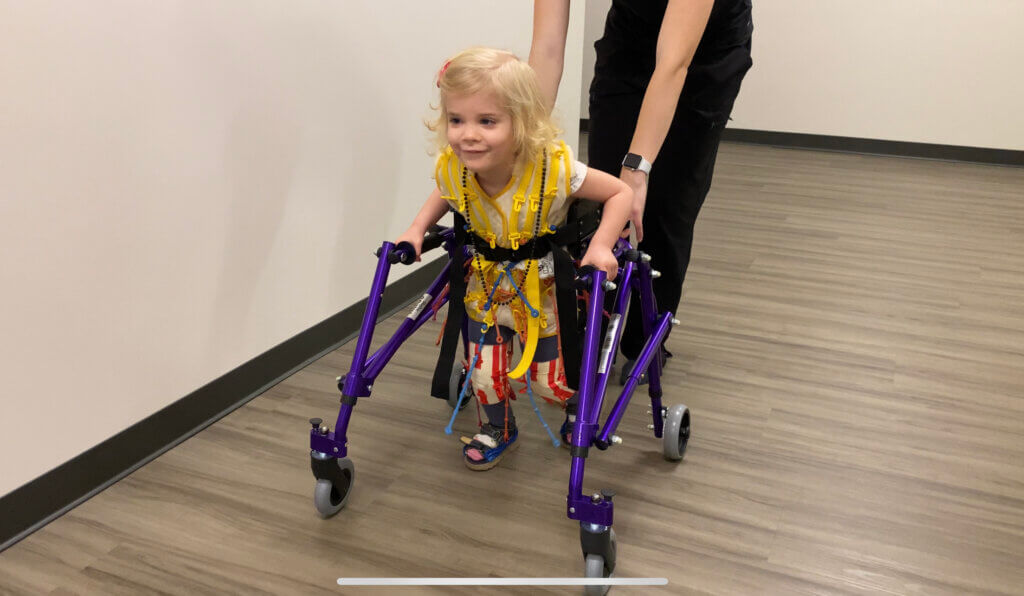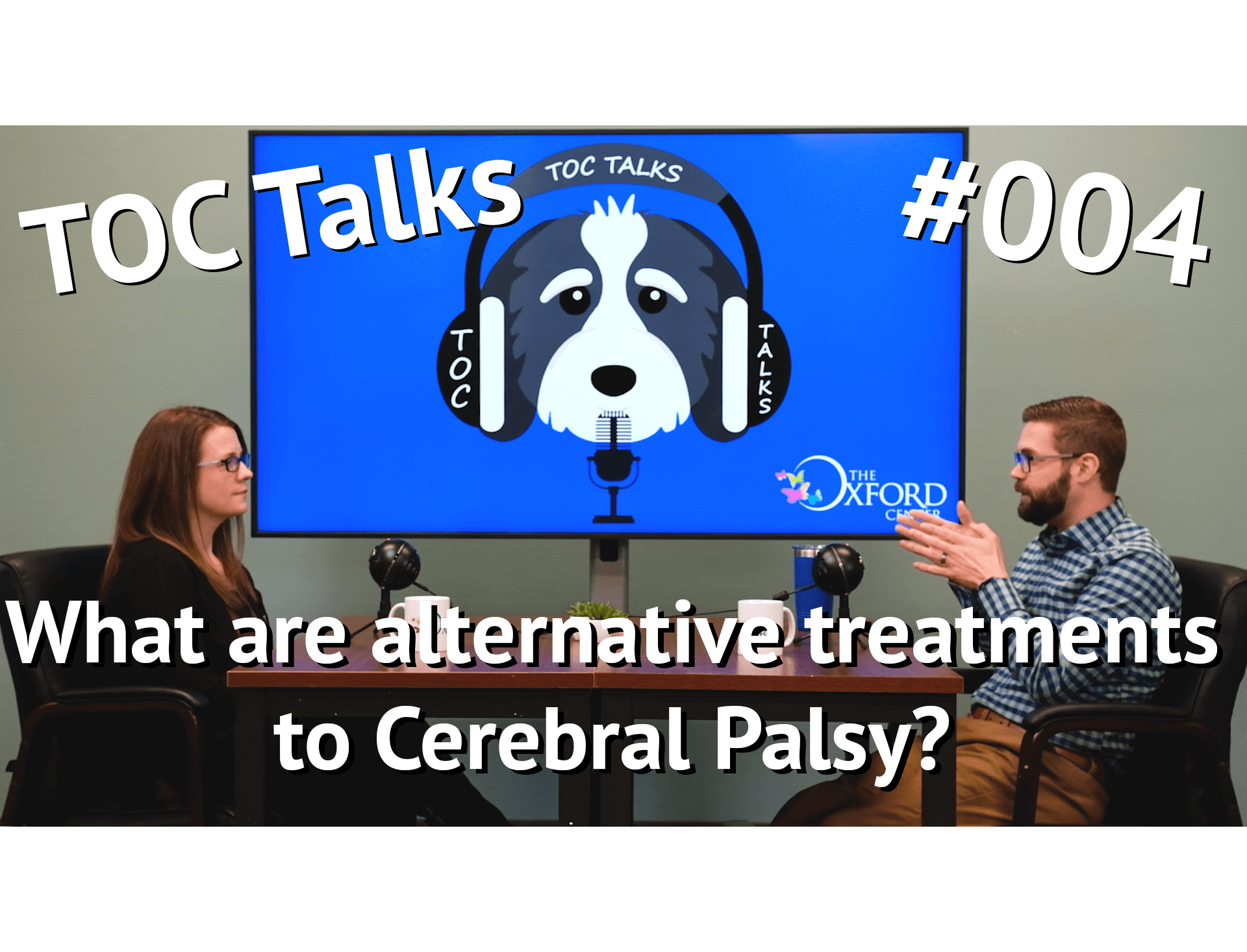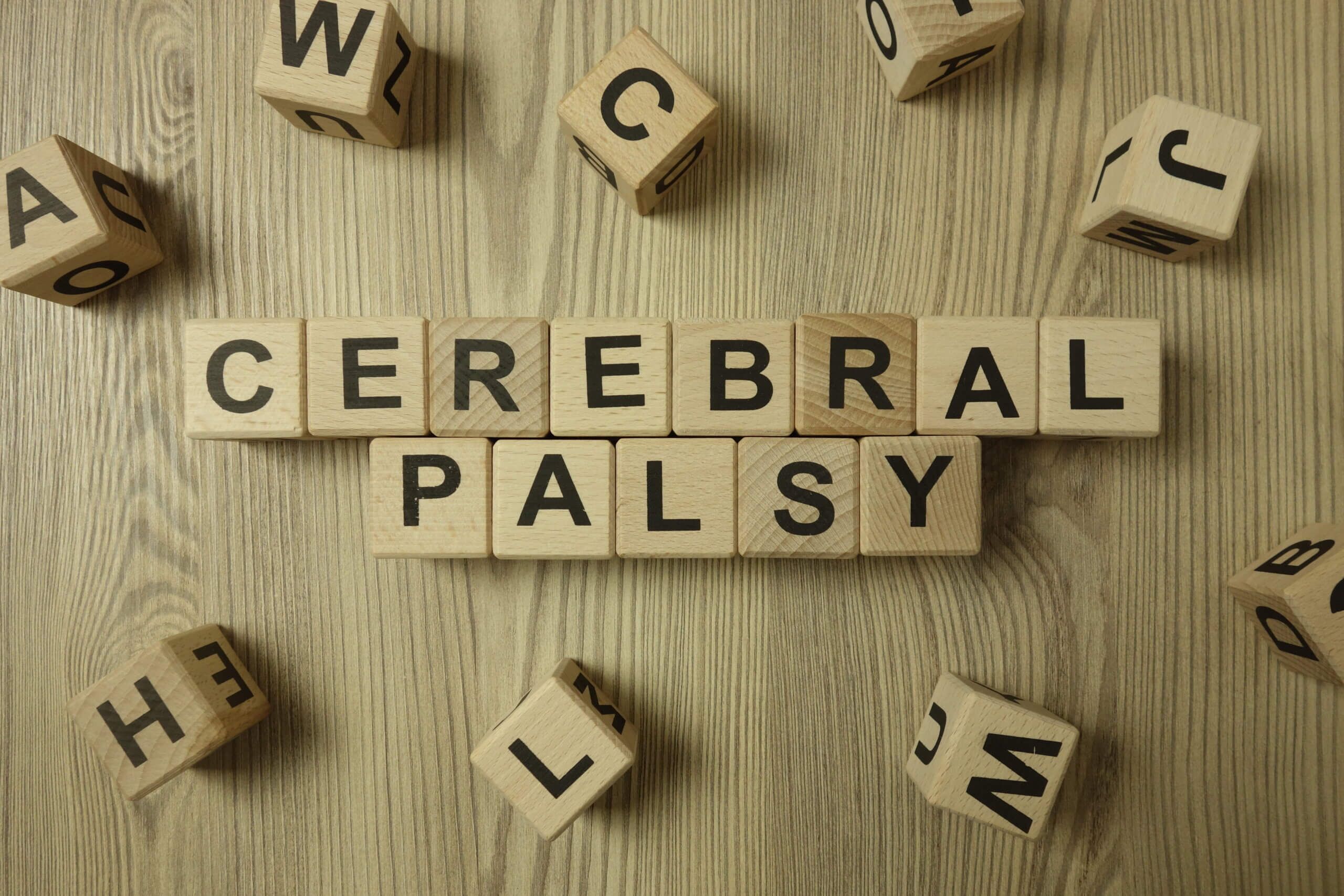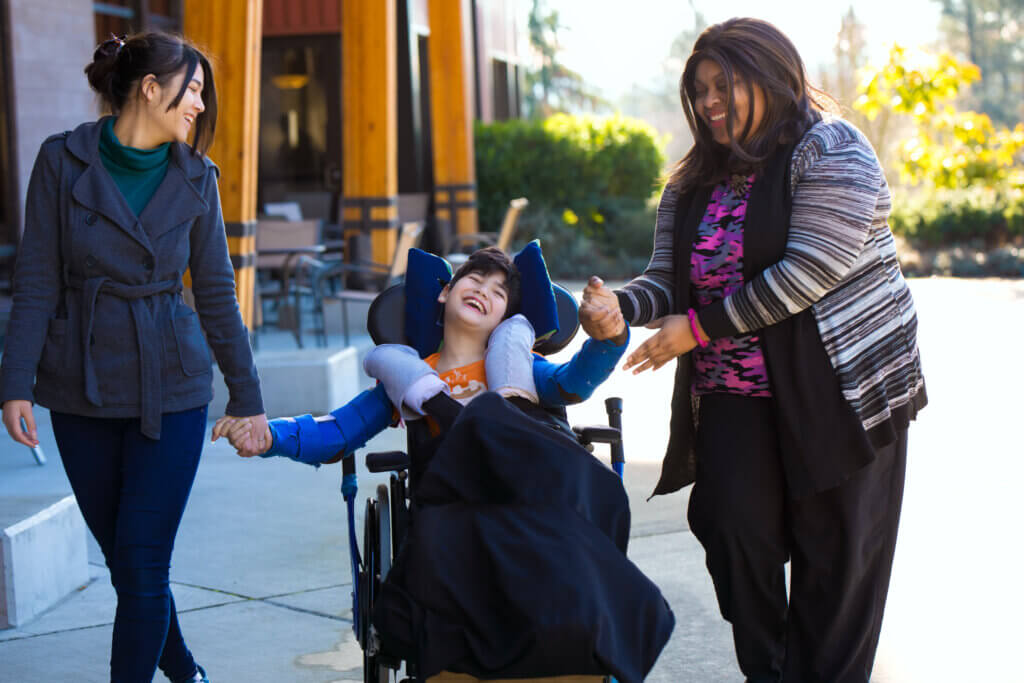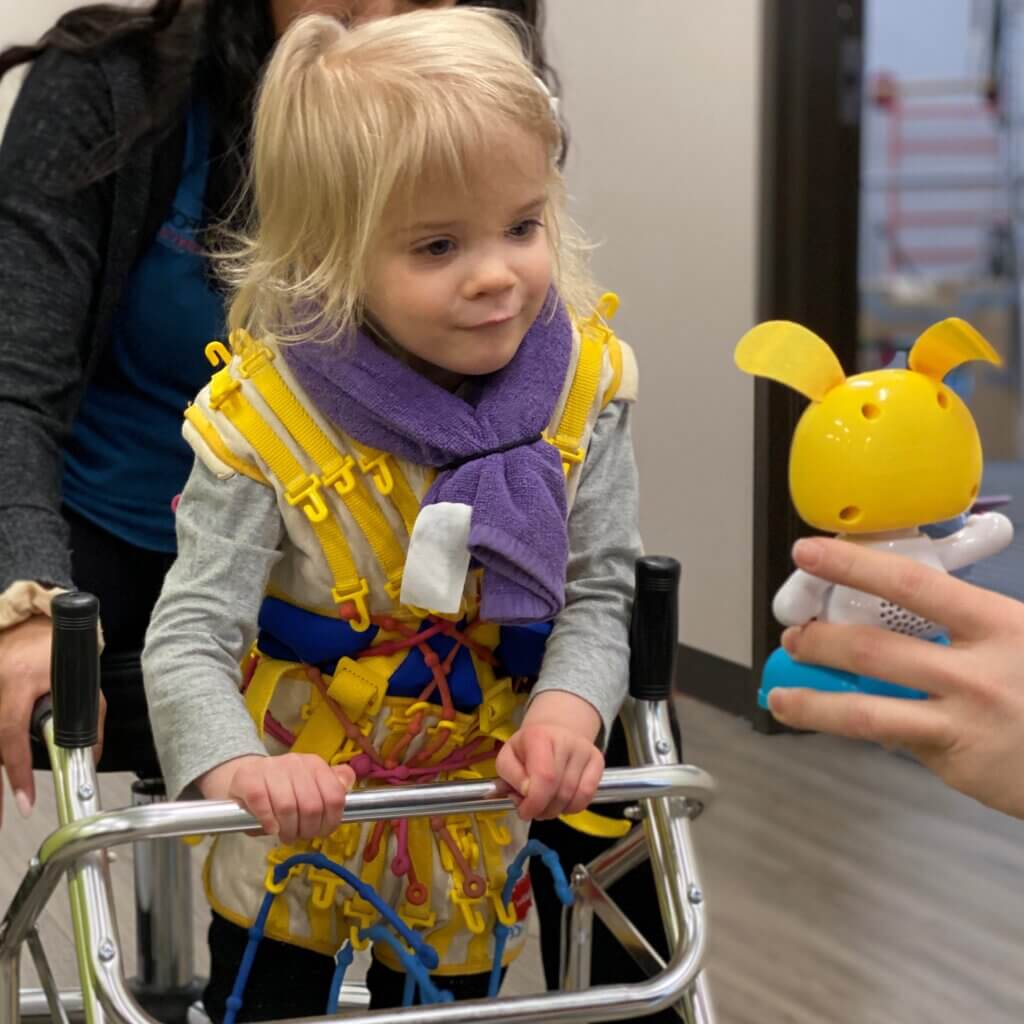Gracie Kistner: A Journey to Finding Hope Again
“I don’t think you realize you’ve lost hope until you find it again.”
-Emily Kistner
If you have been to our Brighton location of The Oxford Center or if you have visited our website, you are probably familiar with Grace Kistner. For those who are not familiar with Gracie, she is an adorable little girl who loves exploring, watching Candy Crush, watching the minnow in the Axolotl tank, and giving hugs. Gracie’s journey began long before discovering The Oxford Center, but it changed her life and her family’s life once treatment began here.
Gracie’s Beginning

Born at 5lbs 1oz, Gracie was tiny, but always happy and healthy. At 6 months old, she began missing milestones and the doctor noticed low tone. At 9 months old, she still had low tone, head lag, and was not meeting milestones. Gracie began Physical Therapy, and her parents, Andrew and Emily, were encouraged not to worry. Gracie’s parents were often told that every child is different, they grow at their own pace, and that she would probably just catch up one day.
At 12 months, the developmental delays and low tone continued, and Gracie’s parents found a new Physical Therapy clinic to try, as not much progress was made with the current PT they were in. After several months, Gracie began to make progress, eventually sitting up on her own, but it was slow, and Gracie hated every minute of Physical Therapy. Watching their baby cry through 45 minutes a week of therapy was devastating to Gracie’s parents, but they pushed on, knowing it was what she needed. Aquatic Therapy was mentioned to Gracie’s parents, and as Gracie had loved the water since she was an infant, they enrolled her. Gracie loved it from the first session, and seeing Gracie’s joy and not one tear during this new Physical Therapy brought her mom to tears.
Diagnosing Gracie
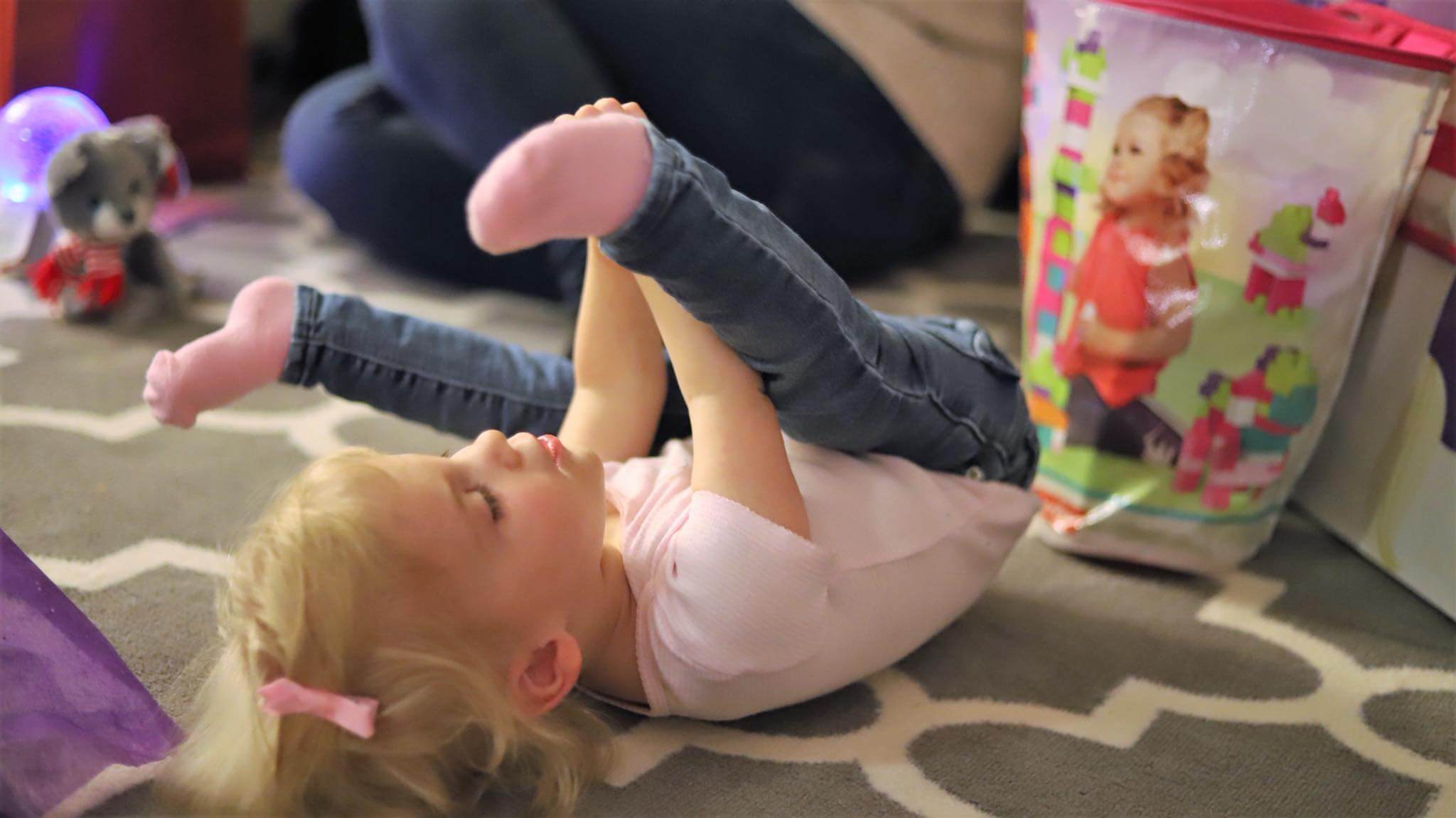
At 24 months, Gracie was still developmentally delayed, still missing milestones, and started displaying spasms and twitches. This led to a new part of Gracie’s journey, with consults to Neurology, Genetics, and Physical Medicine and Rehab. Blood tests were done and an MRI of the brain, but everything came back normal. The lack of answers to explain Gracie’s delays and spasms was frustrating but was the start of a pattern that would be repeated often throughout Gracie’s journey.
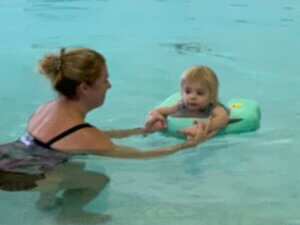
At 3 years old, Gracie was still delayed, still not speaking, and progress was slow, so a new consult was placed to a Developmental Delay Pediatrician. Within minutes of walking into the doctor’s office, Gracie was given a diagnosis of Hypotonic Cerebral Palsy. As Gracie’s parents had been told for years to be patient and that Gracie may still just catch up one day on her own, this was devastating. They were told that there was no cure for Cerebral Palsy, and the only treatment was therapies. After learning this, Gracie’s parents began every therapy they could find for her, eventually adding OT, Speech, and Hippotherapy to her current aquatic and clinic Physical Therapy. Gracie began to gain strength in her core, using a gait trainer, and a reverse walker with a seat sling and pelvic stabilizer. Gracie’s parents took her everywhere to let her explore with her newfound mobility using this equipment. Gracie’s parents tried alternative therapies to help as well, including chiropractor and cranial sacral massage.
Finding The Oxford Center
In December 2019, Gracie’s parents discovered The Oxford Center after a family member heard an ad on the radio about Hyperbaric Oxygen Therapy (HBOT) for Cerebral Palsy. Willing to try anything that could help Gracie, a Discovery Session was scheduled, and an hour drive was made from Toledo, Ohio to Brighton, Michigan to learn more about it. From the moment Gracie’s parents walked into The Oxford Center, they were made to feel at home. Gracie connected instantly with the staff, and this was so important to her parents as they knew she needed to trust and love the people who would be working with her. After learning how HBOT could help with Cerebral Palsy, Gracie’s parents were told about Intensive Physical Therapy that used TheraSuit. Willing to try anything, appointments were scheduled, and arrangements were made to relocate for eight weeks to begin this new journey in February 2020, and oh, what a journey it was. Gracie’s parents found something they didn’t realize they had lost. Hope.
Wanting to document the therapy sessions and the progress hoped for, Gracie’s parents took pictures and videos to share with family and friends back home who were praying for Gracie. The progress that Gracie made was phenomenal, both from HBOT and TheraSuit. Cognitive improvements were seen as Gracie learned how to safely slide down the stairs, something her parents had worked on for months. Physical progress was seen as she learned to take steps with parallel bars and push from sitting to standing. Gracie’s trip was cut short due to COVID, but her parents scheduled her to return for another round of both therapies in September of 2020, and again saw much progress both physically and cognitively.
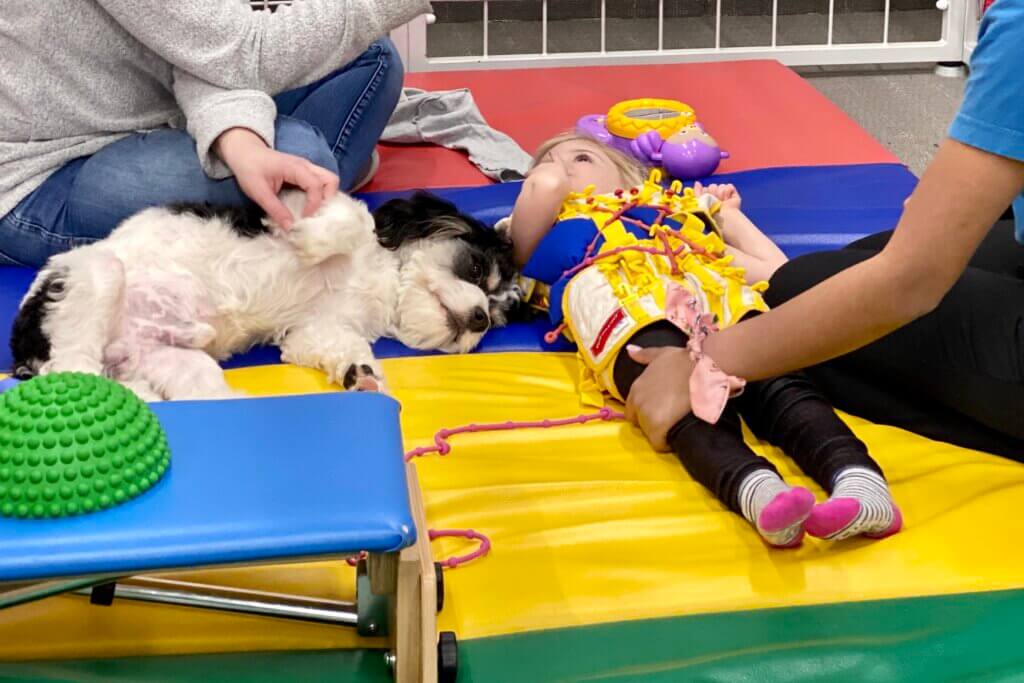
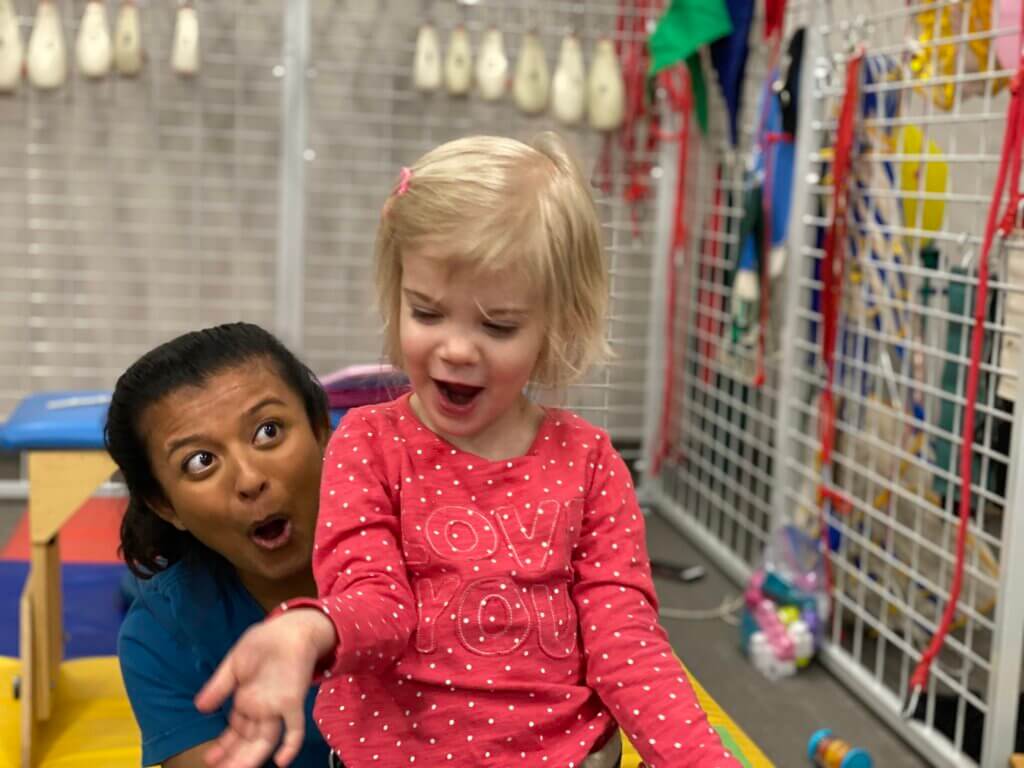
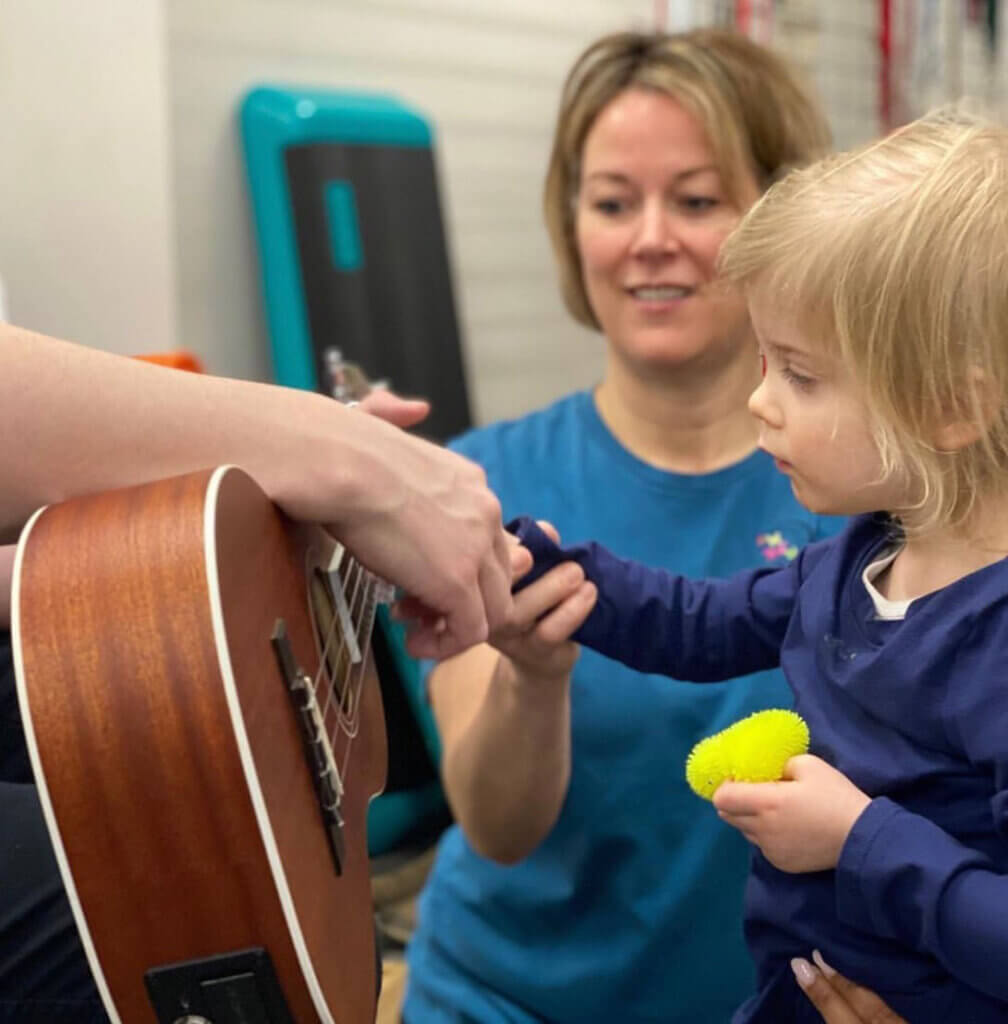
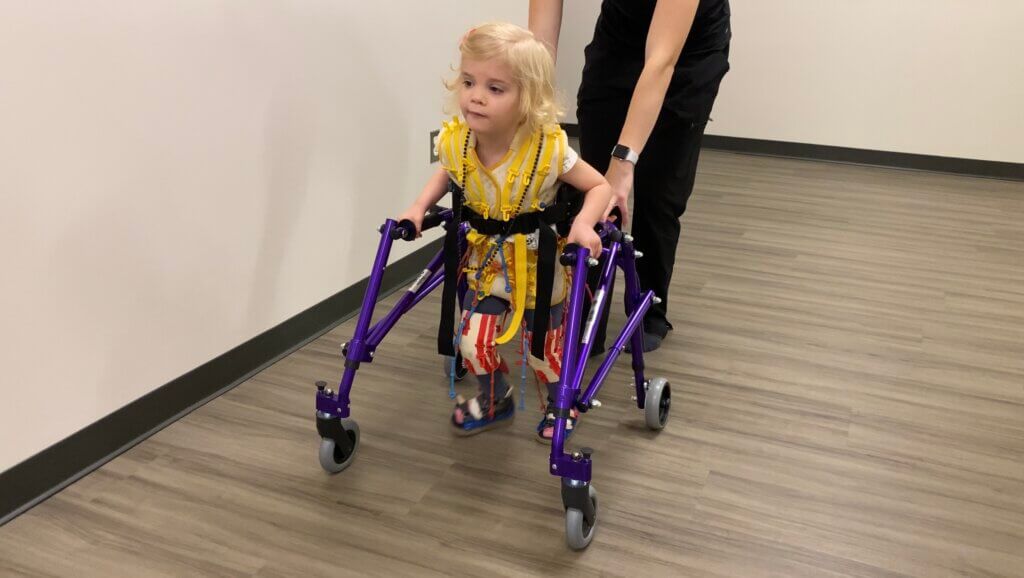
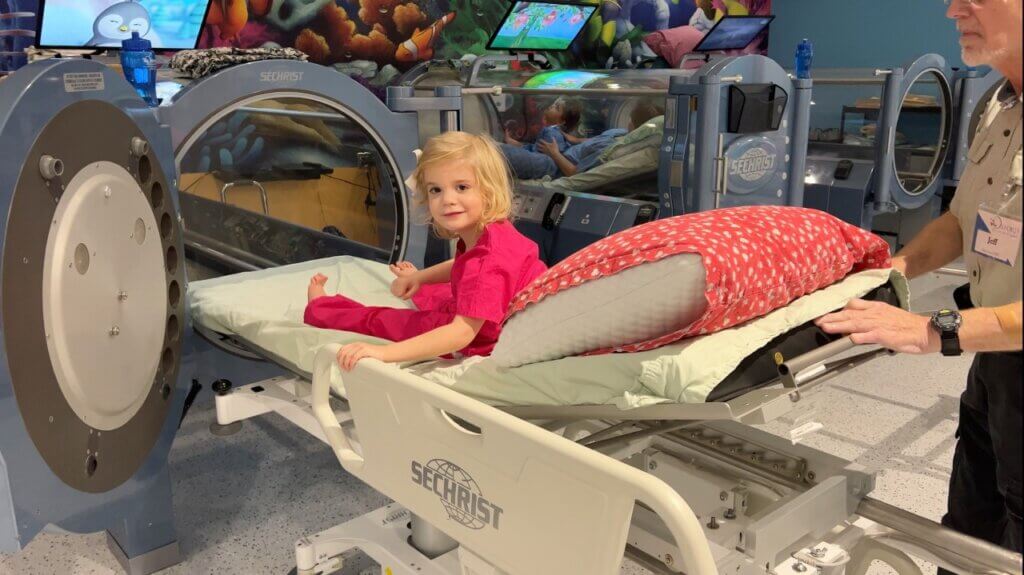
Oxford Kids Foundation
After the second trip for therapies in September 2020, Gracie’s parents wanted to schedule another trip, but as they had paid out of pocket for two rounds of each therapy already in addition to housing and living costs, they were out of money. That was when they heard about the Oxford Kids Foundation. The Oxford Kids Foundation is a 501(3)c non-profit organization run entirely by volunteers that helps provide funding and access to essential therapies that are not covered by insurance in the state of Michigan. Immediately, Gracie’s parents applied for a grant to help with costs for another trip. They were approved for a grant and with the help of a GoFund me started by Andrew’s sister, a third round of therapies began in January 2021 and eventually a fourth round in May of 2021. Gracie’s parents are so incredibly grateful for the opportunities that were made possible for Gracie through the help from the Oxford Kids Foundation.
Autism Diagnosis
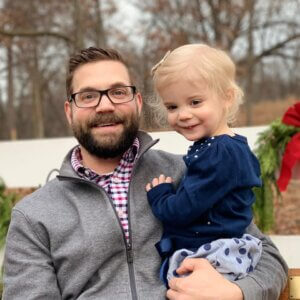
Gracie made incredible progress during her therapies at The Oxford Center, but her parents noticed some things that were concerning. Gracie seemed to be very sensitive to certain sounds, was overly focused on spinning objects, would crawl or walk away from her parents, and many more. She had been evaluated for Autism at age two, but as she looked at the psychologist and reached for her, a diagnosis was dismissed, and her parents were told “Autistic kids don’t do that”. If you are unfamiliar with Autism Spectrum Disorder (ASD), it presents differently in girls than it does for boys. Girls tend to be more social naturally, while boys may not be. After learning more about ASD, Gracie’s parents decided to have her evaluated again in June of 2021. This new specialist was experienced in evaluating girls for concerns of Autism, but also separating the characteristics of Cerebral Palsy and developmental delay from ASD. After many questions and an in-person evaluation with Gracie, it was confirmed that Grace was on the Autism Spectrum. This diagnosis added a new path to Gracie’s journey in the form of Applied Behavior Analysis (ABA).
Gracie is Walking!
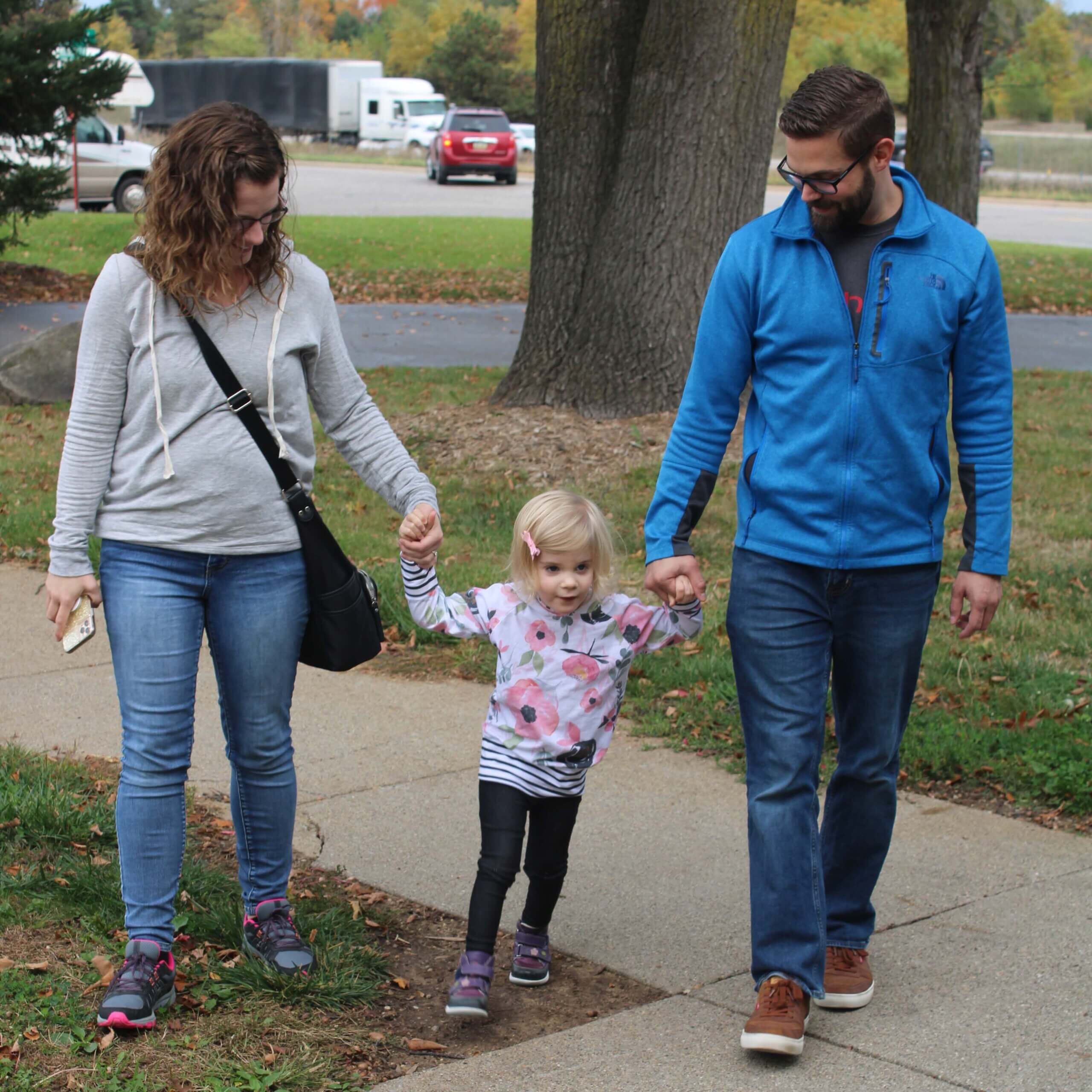
During Gracie’s Discovery Session in December of 2019, a nurse asked her parents what their goals were for her. While they had many goals, the primary goal was for Gracie to be able to walk. While she was small at that point, they knew there would come a time when they would no longer be able to carry her, and the ability to walk would greatly change all of their lives. In the fall of 2021, Gracie began walking independently. Her parents will forever remember the “firsts” that happened at The Oxford Center. The first time she stood up from sitting, the first time she stood independently, and the first time she walked across the lobby of The Oxford Center to get to her favorite nurse, Elizabeth. So many firsts that at one point Gracie’s parents weren’t sure they would ever see, and so many “firsts” to come.
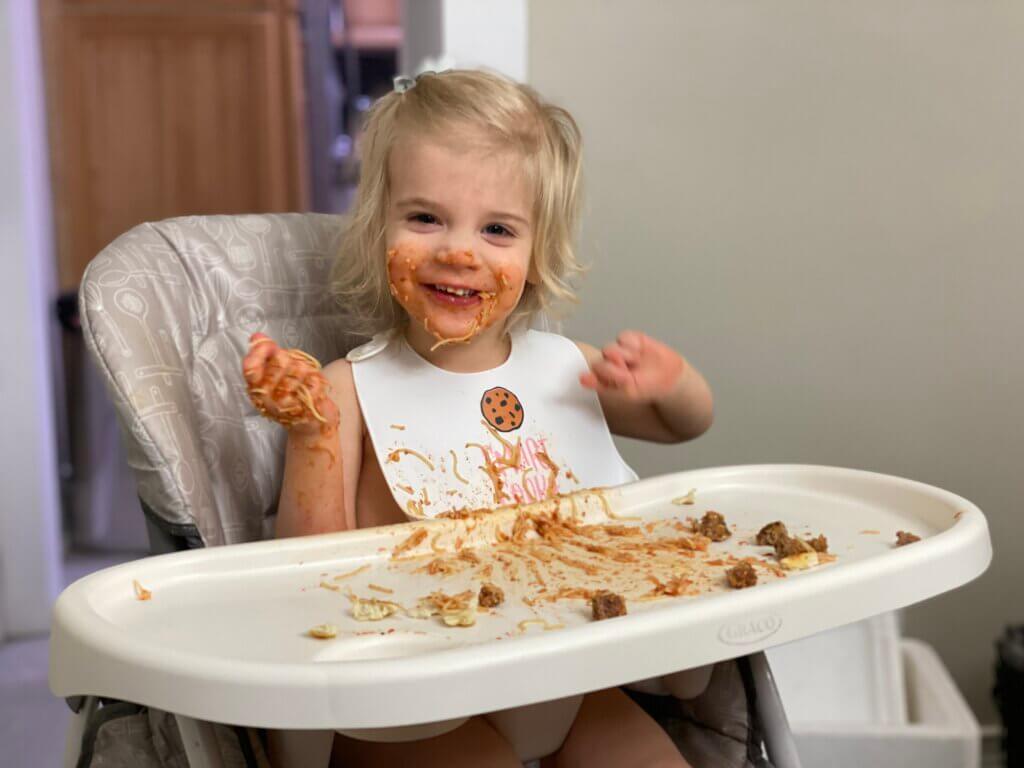
What is Gracie up to Now?
Gracie attends ABA and also has Physical Therapy, Occupational Therapy, and Speech Therapy. While she is still nonverbal, she is learning to communicate on a “talker” and has been able to make her need and wants known this way. She is continuing to gain strength and new skills, and her parents can’t wait to see what else is in her future.
Want to Learn More About the Oxford Kids Foundation?
The Oxford Kids Foundation helps hundreds of children, like Grace, get access to the therapies they need every year! This Foundation has the power to change the life of a child, a parent, and an entire family. This mission is one that is close to the heart of us all here at The Oxford Center. That is why The Oxford Center is hosting the Oxford Kids Foundation’s 13th annual ‘Be The Change’ Fundraising Gala!
The ‘Be The Change’ Gala will take place on April 22nd at 5 P.M. Buying a ticket to the Gala will get you access to an elegant multi-course plated dinner, access to our live auction, and amazing entertainment. Plus, you’ll have a chance to make a difference in the lives of children with disabilities. All proceeds from the event go directly towards helping children receive the therapies they desperately need!
We’re also offering an online auction, open to the public, which includes unique and exciting baskets, vacations, experiences, and more! Even if you can’t make it to the event, you can still bid on some amazing items and help support a great cause. Don’t miss out on this incredible opportunity to give back and have a great time doing it. Visit theoxfordkidsfoundation.org to get your tickets and access the auction today!

